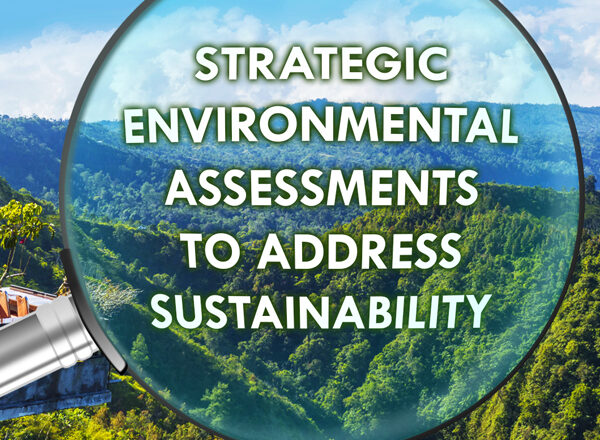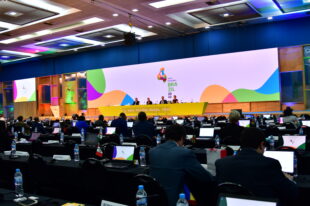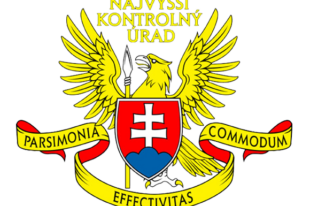Strategic Environmental Assessments to Address Sustainability

by Blucer W. Rajagukguk and Rezza Rinova Tohir, Audit Board of the Republic of Indonesia
The Challenge
The adoption of the Sustainable Development Goals (SDGs) by the United Nations (UN) in 2015 marks an impressive milestone in the modernized world’s history. Nearly all UN-member countries have accepted (and most have ratified) the SDGs into national policy frameworks.
The SDG initiative attempts to overcome problems that arise as consequences from modernization and incorporates inclusiveness by allowing each participating country to establish a customized set of goals.
One SDG imperative—to ensure implementation is properly and effectively carried out—calls for policy actors to be mindful of accuracy, timeliness, data availability and data reliability.
Moreover, in 2017, the International Organization of Supreme Audit Institutions (INTOSAI) recognized the need for Supreme Audit Institutions (SAIs) to comprehensively address SDGs during audits while including all relevant stakeholders.
How can this best be accomplished?
The Strategic Environmental Assessment
Several sustainability measurement systems exist, including the Strategic Environmental Assessment (SEA)—a tool that instills sustainability concerns in policies. Originating from the Environmental Impact Assessment (EIA), the SEA focuses on producing and utilizing reports on environmental effects in plans and programs, while, at the same time, incorporating concerns from members of society.
Some consider the SEA to be a source of interference in Indonesia, since political interests tend to heavily influence plans, policies and programs in Asia. However, the SEA maintains a high acceptance rate in governments when compared to other tools.
Related Policies
UN resolution A/69/228 calls for promoting and fostering the efficiency, accountability, effectiveness and transparency of public administration by strengthening SAIs and underscores the significance of safeguarding SDG implementation.
SAIs can, and should, play an important role in SDG-related audits, particularly as they add value for decision makers and citizens. SAIs are also encouraged to contribute to tracking progress, monitoring implementation and identifying room for improvement when it comes to national sustainable development efforts.
INTOSAI’s commitment to support SDG implementation was further recognized in the strategic priorities for 2017-2022, namely crosscutting priority 2, which seeks to contribute to SDG follow-up and review within the context of each nation’s specific sustainable development efforts and SAI individual mandates.
INTOSAI’s International Standards of Supreme Audit Institutions (ISSAI) 5130 also addresses sustainability efforts. ISSAI 5130, “Sustainable Development: The Role of Supreme Audit Institutions,” states that SAIs are essential in promoting sustainable development externally (governments) and internally (audit scopes). ISSAI 5130 suggests SAIs focus audits on strategic levels and detailed target indicators. Using an SEA can be a fitting entry point, particularly as the SEA connects with the ISSAI 5130 framework for capacity building and experiential learning.
SEA Applicability to SDG-Related Audits
Employing the SEA to implement SDG-related audits can be enhanced by following ISSAI 5110, “Guidance on Conducting Performance Audit with an Environmental Perspective.”
ISSAI 5110 suggests SAIs conduct performance audits on environmental programs and highlights an environmental perspective within government programs. Differentiating environmental and societal impacts from economical effectiveness and efficiency is an advantage in using an SEA point of scope coupled with relevant legal rules as criteria.
Generally speaking, proposed steps to SEA implementation would include:
- Assess SEA availability in performance audits;
- Evaluate SEA effectiveness and efficiency using relevant instruments;
- Conduct a specialized SEA audit; and
- Develop criteria using the SEA (environmental perspective) in auditing government financial statements.
In Context: Indonesia
SEA’s implementation in Indonesia officially kicked off by instruction of Law 32/2009 on Environmental Protection and Management, obliging organizations to consider SEA when formulating plans, policies and programs. An SEA can also be used to change or revise previous versions.
By virtue of presidential rule, Indonesia’s Middle-Term Development Plan 2015-2019 was modified to incorporate SDGs and develop an SDG national action plan. The ruling also applies to regional level governments.
These underlying conditions provide a distinct advantage for SEA deployment in Indonesia.
The Audit Board of the Republic of Indonesia (BPK RI) has included SEA in performance and financial auditing scopes and has established its financial audit framework with an environmental perspective.
Stepping Stones for the Future
Reflecting on the numerous benefits it provides, the SEA—as an entry point to address sustainable development and as a tool to emphasize the importance of participating in policy formulation—provides countless possibilities that can lead to greater SDG awareness and, ultimately, positive global change.





